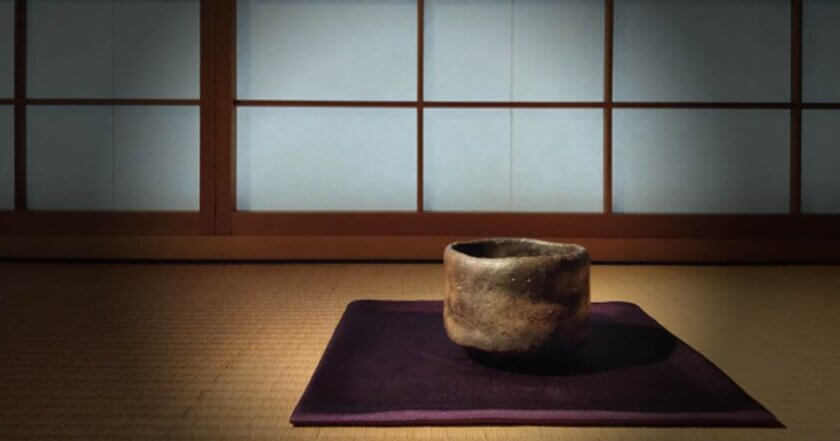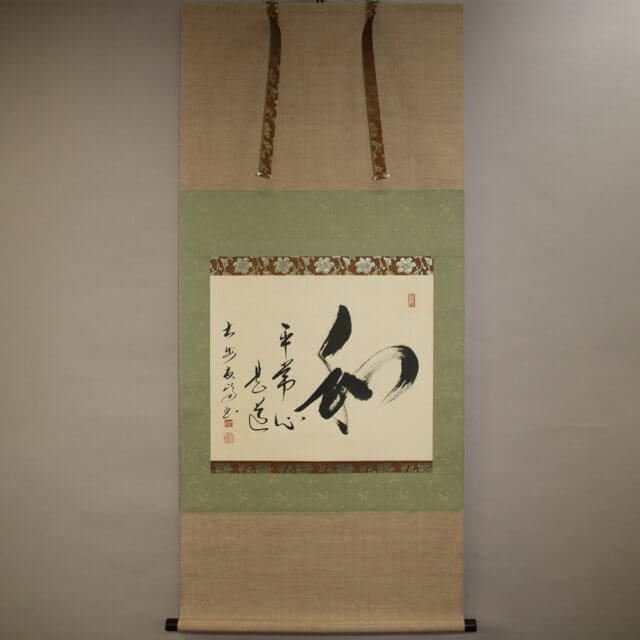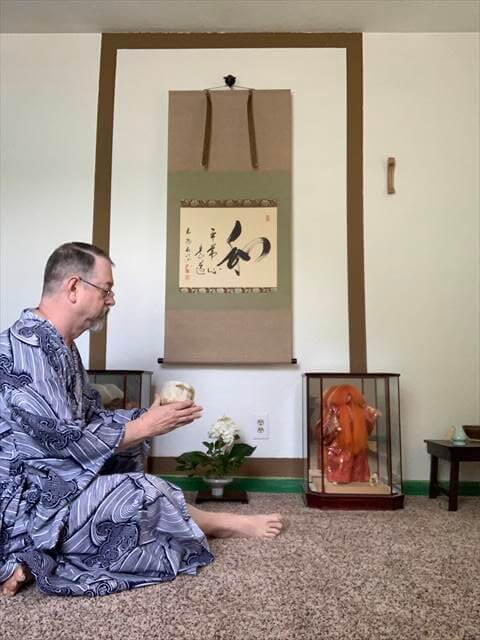An American Customer Purchased a Kakejiku Hanging Scroll with Zen Terminology for His Tea Room.

An American Customer Purchased a Kakejiku Hanging Scroll with Zen Terminology for His Tea Room
The tea ceremony is one of the typical cultures of Japan. It, however, originated in tea-drinking customs in China. After being brought to Japan, this practice went through unique transformations and formed the current tea ceremony.
Sen no Rikyū (1522-1591), a great master of the tea ceremony, said, “In a tea ceremony, there is no tool more important than a hanging scroll.” As he was very influential, hanging scrolls gained popularity and developed together with tea ceremonies. The tea ceremony and the hanging scroll are in a very close relationship and are inseparable.
Nowadays, there are many tea ceremony enthusiasts not only in Japan but also in other countries around the world. And we are receiving more and more requests for hanging scrolls to enrich their experience of a tea ceremony.
The episode we introduce in this article is about one of them.
This time, we received an order for a hanging scroll from a customer in the U.S. who has purchased hanging scrolls from us twice before.
Click below for related articles in the past.
We are very happy that he has become one of our repeat customers.
The image below is his third purchase: a hanging scroll with a calligraphic work.

These letters were calligraphed by Takahashi Yūhō, the abbot of Daian Zenji Temple, an ancient temple of the Myōshinji school of the Rinzai sect in Fukui Prefecture.
He is a talented calligrapher who had solo exhibitions overseas and is popular for his flexible brush strokes.

Takahashi Yūhō
The calligraphy says: “和/Harmony — 平常心是道/The ordinary mind is the way.” (Wa / Byōjōshin Koredō)
This is one of the Zen terminologies which explains that the ordinary, natural mind is the way to enlightenment.
The words represent the fundamental idea of Zen, that enlightenment is not something special, but something that emerges by doing the things of daily life correctly and carefully, and by always organizing your mind.
For this reason, Zen Buddhism considers the daily deeds itself as training for enlightenment.
Sen no Rikyū also incorporated the meaning of this Zen terminology into his tea ceremony. He said: “Know that tea ceremony is nothing more than boiling water, making tea, and drinking it.”
His words are interpreted as: “Tea ceremony is nothing more than boiling water, making tea, and drinking it. But it is important to be mindful of adjusting the amount of hot water and the amount of powdered green tea as needed, depending on the condition of the guest, time, and occasion.” To put it another way, this can also be translated as: “Tea ceremony is nothing more than boiling water, making tea, and drinking it. It may seem like an obvious thing to do. However, doing things as they should be is not that easy. So, be diligent.”
It is a meaningful phrase that explains the importance of how we organize our minds in our daily life.
In this calligraphic work, the word “Harmony” is calligraphed largely next to the aforementioned Zen terminology, 平常心是道, indicating the importance of maintaining peace of mind on a routine basis.
Having this hanging scroll put on the wall, our customer can surely spend his time enjoying the tea ceremony.
We received a photo from our customer enjoying his time with our product ornamented in his tea room.

We felt very happy seeing him appreciating his favorite teaware next to the flower arrangement placed in front of the hanging scroll.
We appreciate him making another purchase.
We also attend to orders for hanging scrolls designed for a tea ceremony like this one too. Please contact us if you are looking for some.



